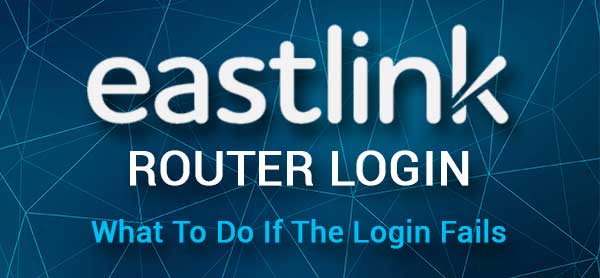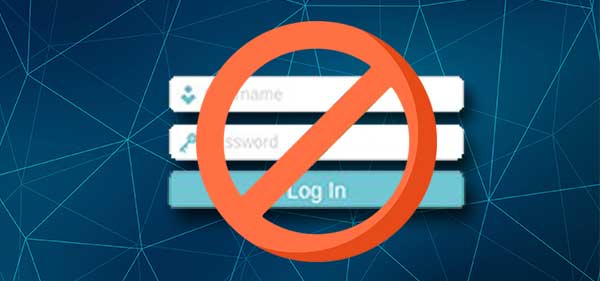Eastlink is a reputable ISP (Internet Service Provider) well known for the reliability and speed of its services. If you are using one of their routers and want to customize its settings to be closely related to your business or you just want to make it more personalized and more secure, you need to access the Eastlink router settings first.
In this article we are going to tell you how to login to your Eastlink router and also what to do in case you can’t login. But first, let’s get ready.

CONTENTS
What You Need:
In order to access the Eastlink admin dashboard, it is necessary to use a device like a computer, tablet or a smartphone that is connected to the network.
You also need to have the Eastlink router IP address, as well as the default or custom admin login username and password. We have provided the default ones in the next section, but if you have changed these earlier, you will have to login using the custom admin username and password.
What Are The Default Eastlink Router Details?
Find your router model below and see what are the default login details it uses. You can also check the sticker on the router itself and find the default login details printed on it.
Maestro WiFi
- Default Eastlink IP address: 192.168.0.1
- Default Eastlink admin username: admin
- Default Eastlink admin password: password
Hitron CODA 4582
- Default Eastlink IP address: 192.168.0.1
- Default Eastlink admin username: cusadmin
- Default Eastlink admin password: the default WiFi password
Arris DG 1670/2470/3270
- Default Eastlink IP address: 192.168.0.1
- Default Eastlink admin username: admin
- Default Eastlink admin password: password
How To Access The Eastlink Router Settings?
These are the steps required to access the Eastlink router admin dashboard.
STEP 1 – The Device Must Be Connected To The Network
This is the first thing you need to check. Your device must be connected to the network or accessing the router settings will be impossible.
You can connect the device over WiFi if you want, but if there is a possibility to connect over the network cable, it is the more recommended option. Besides being more stable than wireless, the wired connection in some cases doesn’t require you to know the admin username and password. And also, sometimes the router settings block the attempt to access the router settings over WiFi, so keep this in mind if you have some problems logging in.
STEP 2 – Open A Web Browser
Open the web browser on your device. All the devices we have mentioned have a web browser installed. You can use Mozilla Firefox or Google Chrome or any other if you want. Just make sure it is recently updated.
STEP 3 – Enter The Eastlink IP In The Address Bar

Eastlink routers use 192.168.0.1 as a default IP address. You need to type this IP into the browser’s address bar at the top and press enter or Go after you do that. If 192.168.0.1 is the right router IP address you will see the Eastlink router login page.
In case the Eastlink router login page doesn’t show up, you need to find the IP address your router is using. You can follow our guide on how to find the router IP address.
STEP 4 – Enter The Eastlink Admin Username And Password
When you see the Eastlink router login page you need to enter the admin username (admin or cusadmin depending on the router model) and the admin password (password or the default WiFi password).
Then press the Login button and you should be taken to the Eastlink router admin dashboard.
What To Do If You Can’t Login?

In certain cases, the Eastlink router login will fail. Luckily, there are a few quick-fix solutions you can apply and resolve the current issue. This should allow you to continue with the login steps and access your Eastlink router settings successfully.
1. Check Your Connection
When it comes to the connection, we have already mentioned that you can connect using a wired or wireless connection. Based on that there are several different things you can check and try in order to fix the problem. For example:
- If you are connected wirelessly, try connecting using a wired connection. In most cases this will fix the problem.
- Check whether your device is connected.
- Check whether Airplane mode is ON.
- Check whether you are connected to the right network.
- Check whether the network cable is firmly connected.
- Try connecting from another device.
2. Check the router IP address
After you type the router IP the router login page should appear. If it doesn’t, check the following:
- Have you typed the IP in the URL/Address bar or in the Search bar?
- Have you typed the IP correctly? Type it again.
- Have you typed the correct IP address? Find the IP address using this guide.
3. Check the admin login details
When you type the IP, you will be asked to enter the admin username and password. If you receive an error message here, try the following:
- Check the label on your router and check whether you are using the correct username and password.
- Type the admin and password again and pay attention whether Autocorrect is changing the first small letter into a capital one. The admin login details are case-sensitive.
- Use the custom username and password if you know that the default ones have been changed.
4. Other tips
- Try accessing the router settings from another web browser
- Disable your antivirus and firewall
- Disable any pop-up blockers on your browser
- Restart the router
- Restart the device
Recommended reading:
- Should The WPS Light Be On On My Router?
- How to Change Unsecured Wireless Network to Secured?
- How to Change Network from Public to Private? (Windows 10) A Detailed Guide
- Where Should I Put My Router (Top 5 Tips for the Optimal Router Placement)
Final Words
Now you know how to login to your Eastlink wireless router and also what to do if things don’t go as planned. As you can see everything is pretty simple.
Once you access the Eastlink router settings successfully, we recommend changing the default settings like the default admin password, the default SSID and wireless password. Also, make sure to make some changes that will make your network more secure. You definitely want to keep your personal files and data safe from unwanted access.

Hey, I’m David. I’ve been working as a wireless network engineer and a network administrator for 15 years. During my studies, I also worked as an ISP field technician – that’s when I met Jeremy.
I hold a bachelor’s degree in network engineering and a master’s degree in computer science and engineering. I’m also a Cisco-certified service provider.
In my professional career, I worked for router/modem manufacturers and internet providers. I like to think that I’m good at explaining network-related issues in simple terms. That’s exactly what I’m doing on this website – I’m making simple and easy-to-follow guides on how to install, set up, and troubleshoot your networking hardware. I also review new network equipment – modems, gateways, switches, routers, extenders, mesh systems, cables, etc.
My goal is to help regular users with their everyday network issues, educate them, and make them less scared of their equipment. In my articles, you can find tips on what to look for when buying new networking hardware, and how to adjust your network settings to get the most out of your wi-fi.
Since my work is closely related to computers, servers, and other network equipment, I like to spend most of my spare time outdoors. When I want to blow off some steam, I like to ride my bike. I also love hiking and swimming. When I need to calm down and clear my mind, my go-to activity is fishing.
